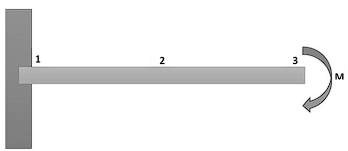Questões de Concurso Público TBG 2023 para Engenheiro Júnior – Ênfase: Projetos e Obras, Civil
Foram encontradas 100 questões
Based on text CB1A2-I, judge the following item.
Oppenheimer’s paper on black holes received little attention
at the time it was published.
Based on text CB1A2-I, judge the following item.
According to Cathryn Carson, Oppenheimer’s work on
neutron stars and black holes was meaningless at the time
it was developed.
Based on text CB1A2-I, judge the following item.
With the help of his students, Oppenheimer could easily shift
from one research topic to another.
Based on text CB1A2-I, judge the following item.
The word “war” (first sentence of the second paragraph)
refers to any war.
Based on text CB1A2-I, judge the following item.
Hartland Snyder helped Oppenheimer write his least relevant
paper in physics.
The pronoun “they” (last sentence of the last paragraph) refers to the word “assumptions”.
Based on the vocabulary and linguistic aspects of text CB1A2-I, judge the following item.
The word “overshadowed” (first sentence of the second
paragraph) means, in the context of text CB1A2-I, “made
less noticeable”.
Based on the vocabulary and linguistic aspects of text CB1A2-I, judge the following item.
The word “installment” (first sentence of the first paragraph)
means, in the context of text CB1A2-I, “to make it ready
to use”.
Based on the vocabulary and linguistic aspects of text CB1A2-I, judge the following item.
The word “physicists” means “medical doctors”.
Based on the vocabulary and linguistic aspects of text CB1A2-I, judge the following item.
Graduate students are people studying for a master’s degree
or doctorate.
Considerando a figura precedente, que representa uma viga engastada em uma parede na região 1, sujeita apenas a um momento M, na extremidade 3, e desconsiderando o peso próprio da viga, julgue o item subsequente.
A viga está sujeita a uma força de cisalhamento na região 1.
Considerando a figura precedente, que representa uma viga engastada em uma parede na região 1, sujeita apenas a um momento M, na extremidade 3, e desconsiderando o peso próprio da viga, julgue o item subsequente.
A força de cisalhamento máxima ocorre na região 2.
Considerando a figura precedente, que representa uma viga engastada em uma parede na região 1, sujeita apenas a um momento M, na extremidade 3, e desconsiderando o peso próprio da viga, julgue o item subsequente.
O momento fletor M é constante ao longo de todo o comprimento da viga.
A respeito dos cuidados e peculiaridades em relação a estruturas de concreto armado, julgue o item a seguir.
Transpasse e solda são meios permitidos para a realização de
emendas em barras de aço.
A respeito dos cuidados e peculiaridades em relação a estruturas de concreto armado, julgue o item a seguir.
Armadura passiva é aquela que não é usada para produzir
forças de protensão.
A respeito dos cuidados e peculiaridades em relação a estruturas de concreto armado, julgue o item a seguir.
A fluência é um fenômeno que ocorre imediatamente após o
tempo de cura, gerando deformações no concreto mesmo na
ausência de carregamentos externos.
A respeito dos cuidados e peculiaridades em relação a estruturas de concreto armado, julgue o item a seguir.
Para que as barras de aço trabalhem em harmonia com o
concreto, as barras de espera para concretagem dos pilares e
vigas devem ser limpas com graxa, de modo a se retirar
qualquer resíduo de oxidação.
A respeito dos cuidados e peculiaridades em relação a estruturas de concreto armado, julgue o item a seguir.
Entre as formas de cálculo da resistência do concreto à
tração, a resistência à tração indireta é determinada pelo
ensaio de compressão diametral.
A respeito de estruturas em concreto pré-moldado, julgue o item subsequente.
Na execução das estruturas, os chumbadores têm a função de
transferir forças de tração e de cisalhamento.
A respeito de estruturas em concreto pré-moldado, julgue o item subsequente.
Devido à falta de ductilidade, a adoção de cabos de aço
como alças de içamento deve ser evitada em estruturas
pré-fabricadas.
